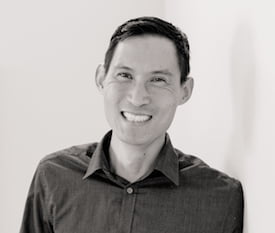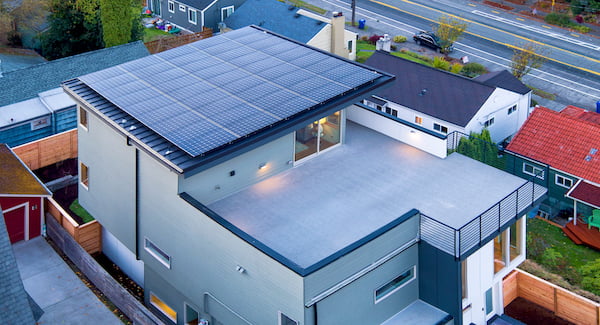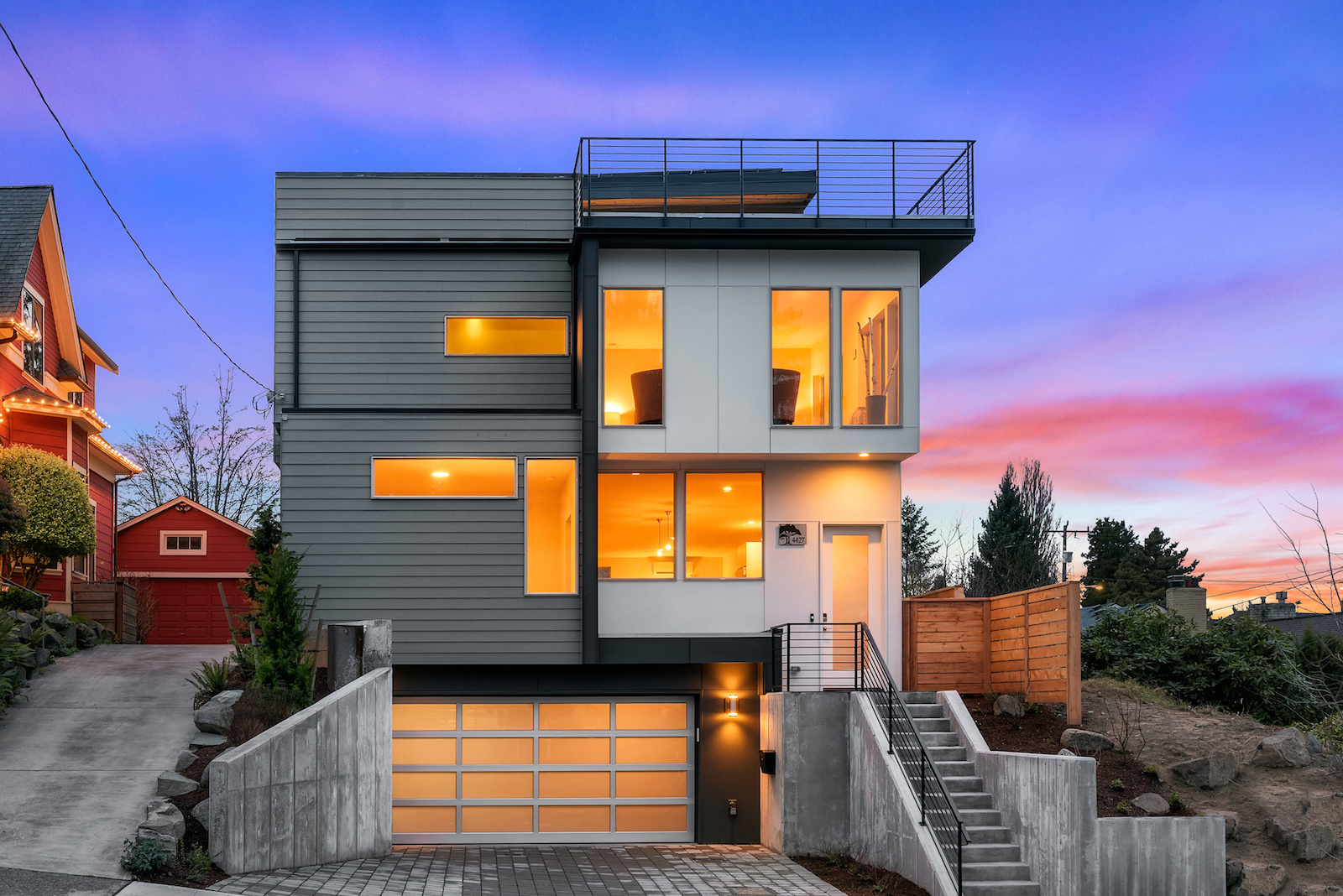ZEP founder, Joe Emerson, interviews Sam Lai, co-founder of Green Canopy Homes in Seattle, WA, about their growing business based on zero energy projects and the unique way that they raise capital for building zero energy homes.
Joe Emerson: What does your company do?
Sam Lai: Green Canopy builds certified green homes and impactful investment funds. Our mission is to inspire resource-efficiency in residential markets by offering zero energy homes to a wide range of income levels. We want to create thriving communities and healthy environments through design, finance, and construction.
JE: How many zero energy homes have you designed and/or built?
SL: We completed the construction of our first net zero energy home in November of 2017 and have since rotated our entire production pipeline to zero energy. By 2019, 40 out of our 90 certified net zero energy homes will be completed.

Sam Lai is co-founder and Chief Sales & Acquisitions Officer of Green Canopy, Inc.
JE: What motivated you to begin designing and building zero energy homes?
SL: Our aim has always been to build the best homes possible – and best for us means best for the homebuyer and best for the planet. Building net zero energy is a step we can take in being part of the process of reversing climate change, as outlined in Paul Hawken’s Project Drawdown. We want to be part of the solution to climate change.
JE: What is the thing you like best about zero energy homes?
SL: The physical and intellectual comfort that zero energy gives homebuyers. We love that our homebuyers can feel the benefits of net zero energy in the cost savings, air quality, temperature control and knowing they are reducing their negative impact on the environment.
JE: What have you learned about designing and building cost effective zero energy homes?
SL: Our team has learned that a number of low cost design, material, and construction decisions make zero energy homes technically and financially feasible. And quality control inspection checklists are key to keeping costs down both for us and the homebuyer. We’ve implemented the use of checklists on the job site to drive consistent quality and timeliness, enabling us to offer zero energy homes at prices that are comparable to similar homes that are not built to zero energy standards.
JE: What design details are most important to strong energy performance?
SL: In addition to an airtight, weatherproof envelope, balanced ventilation, and solar panels Green Canopy net zero energy homes also come with a Sense Home Monitoring System so that homeowners can visualize where they are using the most energy and learn how to improve the energy performance of their home. We believe that zero energy is a lifestyle and we’ve included the tools for homebuyers to live into their values.

Green Canopy develops zero energy homes in existing neighborhoods in Seattle and Portland.
JE: Are there any new technologies for reaching zero energy cost effectively that you are excited about?
SL: Overall, what we are excited about is the fact that the tried-and-true existing technologies are the backbone of building net zero energy homes. This includes ductless heat pumps. Instead of relying on unproven technologies, our homeowners rest assured that we are utilizing the very best green and sustainable building practices. Also, we have committed ourselves to a quality control process that far exceeds what is typical in the marketplace of builders.
I do think there is a lot of excitement around the smart home package that we include with the home including smart locks, doorbells, temperature control, light switches, electric receptacles, and home energy monitoring that can all be controlled from the phone. This package is just the icing on the cake… and people love icing!
JE: What advice would you give a client beginning the process?
SL: I recommend buying certified net zero energy instead of “net zero ready” to avoid needing extra steps in the future to reach sustainability and save money on energy. Find a real estate professional who understands the full benefits and features of net zero energy homes.
JE: How would you advise designers and builders to reduce construction costs?
SL: I would recommend implementing quality control inspection checklists that site supervisors can update onsite to eliminate budget variance.
JE: What was your experience with the financing and appraisal processes of the zero energy homes you have sold? Do you have any suggestions for other builders?
SL: Green Canopy creates private funds to finance the construction of our homes without bank financing. Through urban infill, deep green homebuilding, and the sophisticated management and application of impact investment capital, Green Canopy is dedicated to inspiring resource efficiency in residential markets. This allows impact investors to earn profits while financing innovative homes that benefit homebuyers, the broader community, and our natural environment. We offer property tours in Seattle and Portland to accredited investors and potential investors as a way to show them the work they are contributing to and answer any questions about our process. By building more zero energy homes than the Northwest Multiple Listing Service has yet seen, we aim to establish market comparables for more zero energy homes. Ultimately, facilitating appraisals and financing where zero energy is the norm rather than the exception offers the best result.
JE: Did you receive a third-party certification? If so, how important was that in your process?
SL: Green Canopy thoroughly relies on third-party certification to ensure quality and eliminate any green washing. Our net zero energy homes are Built Green Net Zero Energy Certified in Seattle, and Earth Advantage Zero Energy Certified in Portland.
JE: Do you live in a zero energy home? What do you like about it?
SL: We wish we all did! But these homes we are building are some of the first homes to be built to this standard at market price versus custom construction pricing. We hope that many of our team members will be living in zero energy homes soon!
JE: What policies are needed to advance the movement toward zero energy as standard practice in the construction industry?
SL: Buyers need to demand the quality, sustainability, and savings of net zero energy. The city of Seattle implemented incentives for attaining Built Green Certification and by 2016, the majority of new homes in the city were Built Green. The next step is offering incentives for building net zero energy certified until they become the new standard.
JE: What else do you think needs to happen to get zero energy homes into the mainstream?
SL: There is a great need to educate homebuyers and brokers on the environmental, health, and savings benefits of zero energy homes. The majority of homebuyers and brokers do not yet understand all of the structural and design differences of a net zero energy home and how they are better homes for everyone. The Zero Energy Project is a wonderful, expansive resource!
More information on zero energy homes and impact investing is available from Green Canopy.

